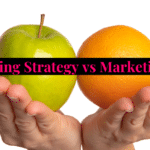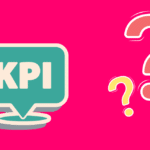Marketing and selling are two crucial components of a successful business.
While both focus on driving revenue, they serve distinct purposes and require different strategies.
Let’s look at the core differences.
Marketing is the process of creating, communicating, and delivering value to customers and managing customer relationships in ways that benefit the organization and its stakeholders.
It’s about building brand awareness, generating interest, and establishing a loyal customer base.
Selling, on the other hand, is the process of identifying, developing, and managing customer relationships in ways that benefit the organization and its stakeholders.
It’s the exchange of goods or services for money or other valuable considerations. In essence, marketing is the preparation for the sale, while selling is the execution of the sale.
This article will explain the fundamental differences between marketing and selling and how they work together to achieve business success.
We’ll also provide some great examples and practical tips to help you integrate these concepts into your own business strategy.
Time to get learning!
Let’s start with the absolute basics and work up from there.
What is Marketing?

Marketing is a comprehensive process that involves understanding customer needs and creating a product or service that fulfills those needs. It includes a wide range of activities aimed at promoting, selling, and distributing products or services.
The American Marketing Association defines marketing as the process of creating, communicating, delivering, and exchanging offerings that have value for customers, clients, partners, and society at large.
And, I think they’ve nailed it with that explanation.
Moving on. The main objective of marketing is to build brand awareness, create a positive image, and ultimately drive sales.
Some key elements of marketing include:
- Market Research: Understanding consumer preferences, behavior, and market trends through surveys, focus groups, and data analysis.
- Target Audience: Identifying the specific group of people or businesses most likely to buy a product or service.
- Product Development: Creating and enhancing products or services to meet consumer needs and preferences.
- Pricing: Determining the optimal price for a product or service based on market demand and competition.
- Promotion: Developing advertising and promotional strategies to inform, persuade, and remind potential customers about a product or service.
- Distribution: Ensuring that products are available in the right place at the right time through various distribution channels.
- Customer Relationship Management: Building and maintaining customer relationships to foster loyalty and repeat business.
Now you’ve got a feel for what marketing is all about, let’s discuss the meaning of selling.
What is Selling?

Selling is the process of identifying, developing, and managing customer relationships to fulfill the organization’s objectives.
Basically, it is a transactional activity that involves exchanging goods or services for money or other valuable considerations.
Selling can be done in various ways, such as face-to-face interactions, telemarketing, e-commerce, or through a sales team. The primary focus of selling is to close deals and generate revenue.
Here are some key aspects of selling:
- Prospecting: Identifying potential customers who have a need for the product or service.
- Qualifying: Determining if a prospect has the budget, authority, need, and timeline (BANT) to make a purchase.
- Presentation: Communicating the value of the product or service to the prospect.
- Objection Handling: Addressing any concerns or doubts that the prospect may have.
- Closing: Finalizing the sale and securing the transaction.
- Follow-up: Maintaining contact with customers to ensure satisfaction and encourage repeat business.
Selling is an essential function for revenue generation and the growth of any business, big or small.
So, we’ve explored the basic concepts of marketing and selling; now, let’s delve into 5 key differences between the two.
5 Key Differences Between Marketing and Selling
Marketing and selling are often used interchangeably, but they are distinct concepts that serve different purposes in a business.
You’ll find that understanding the differences between the two is crucial for crushing it in business.
Here are five key differences between marketing and selling:
1. Purpose and Focus: The primary purpose of marketing is to create, communicate, and deliver value to customers, ultimately building and maintaining strong relationships with them.
Marketing is about understanding the needs and wants of the target audience and providing solutions to meet those needs.
Selling, on the other hand, focuses on the exchange of goods or services for money. Its primary goal is to drive immediate sales and revenue.
2. Timeline: Marketing is generally a longer-term strategy focused on creating brand awareness, customer loyalty, and sustained growth.
It involves building a strong brand image, engaging with customers, and nurturing relationships over time.
Selling is more short-term, aiming to close sales quickly and generate immediate revenue.
3. Engagement: Marketing is a two-way communication process between the business and its customers.
It involves listening to customer feedback, understanding their needs, and providing relevant information to build trust and loyalty.
On the other hand, selling is more of a one-way communication process, where the salesperson is focused on convincing the customer to make a purchase.
4. Scope: Marketing encompasses a wide range of activities, including market research, product development, pricing, promotion, and customer relationship management.
It involves creating a holistic strategy to attract and retain customers.
Selling is a narrower activity, focused on the actual transaction and the techniques used to close a sale.
5. Metrics: Marketing success is often measured by long-term metrics, such as brand awareness, customer satisfaction, and customer lifetime value.
Selling success is typically measured by short-term metrics, such as the number of sales closed, the value of the sales, and the conversion rate.
These differences illustrate how marketing and selling play distinct roles in a business’s overall strategy.
So, while marketing focuses on building relationships and creating value, selling is more transactional, aiming to close deals and drive immediate revenue.
Ok, so you get the differences between the two, but how do they work together?
Let’s explore.
Yes, I love the number 5 🙂
5 Ways How Marketing and Selling Work Together

Marketing and selling are like two sides of the same coin; they complement each other to achieve a common goal.
While they serve different purposes, they both contribute to the success of a business.
Here are 5 ways marketing and selling work together:
1.Lead Generation: Marketing activities, such as advertising, content marketing, and social media, create awareness and interest in a product or service.
This generates leads, which are potential customers who have shown an interest in the offering. These leads are then passed on to the sales team, who can further qualify and convert them into paying customers.
2. Customer Education: Great marketing helps to educate customers about the features, benefits, and uses of a product or service.
This information can make it easier for the sales team to sell, as customers are already familiar with the offering and its value.
Relationship Building: Focused marketing efforts, such as email campaigns and loyalty programs, are essential for maintaining and nurturing customer relationships.
By staying engaged with customers, marketing helps to build brand loyalty, which can lead to repeat sales and referrals.
Furthermore, this makes the job of selling easier, as loyal customers are more likely to make a purchase.
Feedback Loop: Both marketing and selling provide valuable feedback to the business.
For instance, marketing activities, such as surveys and social media monitoring, gather insights into customer preferences and market trends.
This information helps the sales team better understand customer needs and tailor their approach.
In turn, the sales team’s interactions with customers provide valuable feedback to the marketing team, allowing them to refine their strategies.
Revenue Generation: While marketing focuses on creating awareness and building relationships, it ultimately contributes to revenue generation.
By attracting and nurturing leads, marketing sets the stage for the sales team to close deals.
Marketing efforts, such as targeted advertising and compelling messaging, make the job of selling more effective, leading to increased sales and profits.
By working together, marketing and selling create a synergy that can drive business success.
So there you have it; marketing sets the stage by creating awareness, building relationships, and providing valuable insights while selling closes the deals and turns leads into loyal customers.
Now, let’s look at a couple of real-world examples
Marketing and Selling Examples
We’ve picked two big companies that everyone knows, Apple & Coca-Cola.
Let’s rip in.
Example 1: Apple

Marketing: Apple is known for its exceptional marketing strategies. The company focuses on creating an emotional connection with its audience.
Apple has built a strong and loyal customer base through its sleek product designs, minimalist advertising, and aspirational branding.
So, how does Apple sell?
Selling: Apple’s sales strategy revolves around its strong retail stores, where customers can experience its products firsthand.
An Apple store is always beautifully designed, organized, and full of an abundance of very well-educated staff (in everything Apple, that is).
Many people say that “Apple sells itself.” That’s why you can touch, feel, and use all of Apple’s products in-store. Holding that new iPhone makes you want it!!
Am I an Apple fan? Absolutely, I am!
Naturally, Apple has a solid online presence, too, plus a huge network of Apple fans around the world showcasing their products just because, well, they love them.
Now let’s look at that mysteriously sugary brown, thirst-quenching liquid we know as Coke.
Example 2: Coca-Cola

Marketing: Coca-Cola’s marketing efforts are centered around its iconic brand image. The company invests heavily in advertising, sponsorships, and promotions to maintain its position as a global leader in the beverage industry.
Coca-Cola focuses on creating a sense of joy and togetherness through its messaging.
Selling: Coca-Cola’s selling strategy is vast and diverse. The company relies on a network of distributors, retailers, and vending machines to make its products available worldwide.
Additionally, Coca-Cola’s sales team works with large-scale customers, such as restaurants and convenience stores, to secure bulk orders and maintain prominent product placement.
Let’s wrap this up.
Wrap Up
As you now know, Marketing and selling are two vital components of a successful business, each playing a unique role in driving revenue and growth.
While they serve different purposes, they work hand in hand to create a strong and lasting impact.
Marketing sets the stage by creating awareness, building relationships, and providing valuable insights, while selling closes the deals and turns leads into loyal customers.
Lastly, by leveraging the strengths of both, businesses can create a cohesive strategy that maximizes their potential for success.
Want to find out which is more important? Check out this clip, they explain things really well.
Frequently Asked Questions
Let’s run through a few common questions on the topic. Don’t mind the dog, she is friendly.

What are the main differences between marketing and selling?
The main difference between marketing and selling is their focus. Marketing focuses on understanding the needs and wants of customers and creating products and services to satisfy those needs.
It involves building relationships with customers and promoting the value of the product or service.
Selling, on the other hand, focuses on the transactional aspect of exchanging products or services for money. It involves persuading customers to make a purchase and closing the sale.
How does marketing differ from selling in terms of approach and strategy?
Marketing takes a more long-term approach, focusing on building brand awareness, creating a positive image, and fostering customer loyalty.
It uses various strategies, such as advertising, content marketing, and social media, to reach a broad audience and engage with potential customers.
Selling, on the other hand, takes a more immediate approach, focusing on closing individual sales. It uses direct interactions with customers, such as face-to-face meetings or phone calls, to persuade them to make a purchase.
What are the key skills required for marketing and selling?
Key skills for marketing include:
- Creativity in developing compelling messaging and promotional materials.
- Analytical skills for interpreting market data and trends.
- Communication skills for effectively conveying the value of a product or service.
- Key skills for selling include:
- Persuasion and negotiation skills to close sales.
- Active listening to understand and address customer needs.
- Relationship-building to foster long-term customer connections.
How does the role of a marketing professional differ from that of a sales professional?
A marketing professional focuses on creating and implementing strategies to promote a product or service, build brand awareness, and attract potential customers.
They work on developing marketing materials, analyzing market trends, and measuring the effectiveness of marketing campaigns.
On the other hand, a sales professional focuses on engaging with customers to close individual sales.
They use their knowledge of the product or service, persuasion skills, and relationship-building to guide potential customers through the purchasing process and convert leads into sales.
How do marketing and sales teams work together in an organization?
Marketing and sales teams often work closely together in an organization to achieve common goals.
Marketing teams provide sales teams with leads, information about potential customers, and marketing materials and messaging to support the sales process.
Sales teams, in turn, provide feedback to marketing teams about the effectiveness of marketing strategies and customer needs.
This collaboration helps both teams align their efforts to maximize the organization’s success.
What are the key performance indicators (KPIs) for marketing and sales?
Key performance indicators for marketing include:
- Customer acquisition cost (CAC).
- Return on investment (ROI) for marketing campaigns.
- Website traffic and conversion rates.
- Key performance indicators for sales include:
- Sales conversion rate.
- Average deal size.
- Sales quota attainment.
- Customer lifetime value (CLV).










